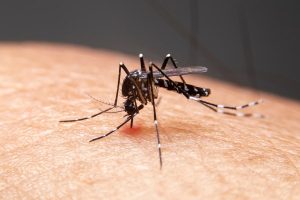It’s been overshadowed by the new coronavirus outbreak in China, but this year’s flu season could be near its peak after surging throughout the United States for months.
At least 14,000 people have died and 250,000 have already been hospitalized during the 2019-2020 flu season, according to estimates from the U.S. Centers for Disease Control and Prevention. More than 26 million Americans have fallen ill with flu-like symptoms.
“There is a deadly respiratory virus that is circulating throughout the United States, and it is at its peak. It is not novel coronavirus,” said Dr. Pritish Tosh, an infectious disease specialist with the Mayo Clinic, in Rochester, Minn.
This flu season has come in two waves and has been particularly hard on children, the experts said.
The season started early, in October, with an unusual wave of influenza B virus.
Influenza B is less likely than other strains to mutate and become more virulent. That means it poses a greater threat to young people than to older folks, who may have gained immunity because they encountered the strain before.
There have been 92 flu-related deaths among children this season, a higher total at this point of the year than any season in the past decade. Two-thirds of these deaths were associated with influenza B viruses, the CDC noted.
More recently, a second wave of influenza A viruses featuring the H1N1 strain has hit the United States, Tosh noted.
“This has been an extended season, and we’ve certainly been seeing a lot of hospitalizations and bad outcomes from it,” Tosh said. “We will likely continue to see high influenza activity for several weeks. We are probably at its peak right now. I sure hope it doesn’t get much worse.”
With a less effective flu vaccine the season could have been even more severe, experts note. However, lab and epidemiologic data show that this year’s flu shot is a pretty good match with the major strains circulating throughout the country.
The H1N1 part of the flu vaccine is essentially a 100% match with the circulating strain, CDC lab data show.
“We’ve had a lot fewer deaths this year, thankfully, and maybe some of that is because of the match with the H1N1 influenza A portion of the vaccine,” said Dr. Kristin Englund, an infectious diseases doctor with the Cleveland Clinic.
Meanwhile, the influenza B part of the vaccine is a 60% match to the circulating strain. That might explain why that flu strain got such an early toehold, said Dr. Bernard Camins, medical director for infection prevention at the Mount Sinai Health System in New York City.
“I am pretty sure the influenza B circulating strain is not a good match with the current vaccine,” Camins said. “I think that’s probably why there are a lot more cases with influenza B now.”
Still, early estimates from the CDC show that the vaccine is 50% effective in preventing influenza B infections. The agency said that indicates the vaccine has “significantly reduced medical visits associated with influenza so far this season,” according to a report published Feb. 21 in the CDC publication Morbidity and Mortality Weekly Report.
The overall flu-related hospitalization rate in the United States is 41.9 cases per 100,000 people, which is similar to what has been seen at this time during recent seasons, the CDC reported.
The percentage of deaths attributed to flu and pneumonia currently is 6.8%, which is below the epidemic threshold of 7.3% , according to the CDC.
Because the vaccine appears to provide substantial, if not perfect, protection against the major strains, experts say people who haven’t gotten their flu shot could still benefit from it.
“It’s not too late to get your flu vaccine,” Englund said. “Please, if you haven’t yet, consider getting it, not only to protect yourself but also everyone around you.”
People also can protect themselves and those around them from the flu by:
- Regularly washing your hands with soap and water.
- Coughing and sneezing into your elbow rather than your hand.
- Staying home if you’re sick, and avoiding contact with the sick if you’re healthy.
- Using telemedicine from home if you think you’ve got the flu, to keep from spreading it in emergency rooms or doctor’s offices.
Finally, experts emphasize that if you’re not feeling well, assume that it’s the flu that’s got hold of you. Only 26 people have tested positive for coronavirus in the United States and none have died in this country.
“If they have a fever and respiratory illness, they should assume this is influenza unless they’ve had recent travel to China,” Tosh said. “Although most people are going to be concerned about the novel coronavirus, the respiratory virus that’s going to cause the most damage in the United States continues to be influenza.”
More information
The U.S. Centers for Disease Control and Prevention has more about preliminary 2019-2020 flu season estimates.
Source: HealthDay
Copyright © 2025 HealthDay. All rights reserved.

















